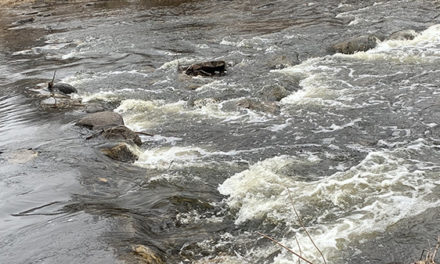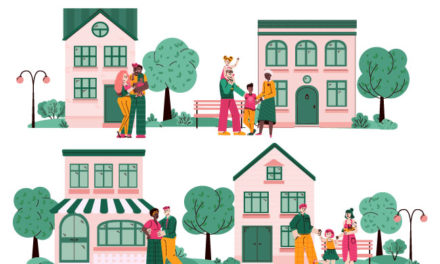By Rick Romano
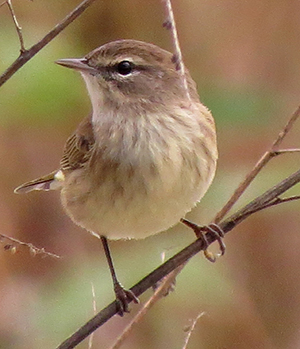 Just steps off busy roads and within minutes of a sprawling medical center, the wooded trail awaits to take visitors on a mile-long trek that is part respite and part informal classroom. In fact, the Forest Education Center (FEC) was born out of a desire to be part of a local school system.
Just steps off busy roads and within minutes of a sprawling medical center, the wooded trail awaits to take visitors on a mile-long trek that is part respite and part informal classroom. In fact, the Forest Education Center (FEC) was born out of a desire to be part of a local school system.
While that plan did not materialize, those who currently manage the project continue their mission to provide a “unique woodland learning environment where meaningful opportunities in forest education, recreation and stewardship are accessible to the broadest audience.”
The work has involved cleaning out a path through the almost 70 acres and further developing that path as accessible for those needing assistance via wheelchairs, walkers, and strollers. Two points of entry have been developed, one off of the Swan Blvd. roundabout at Innovation Drive and the other from the parking lot off Underwood Drive. Those entry points are to be connected with next-step pathways. Once inside the site, visitors can see current signage that has been placed in strategic areas to point out the forest’s facts, including wildlife features. The area is not regularly patrolled (and virtually no incidents of vandalism or other issues have been reported). Infra-red counters record numbers of visitors, and cameras well off the beaten path serve to record wildlife activity.
Much more is in the offing, said FEC President Tom Gaertner. He noted three initiatives that will underscore the idea of a sustainable forestry.
Three developing initiatives
 “First, we want to message the whole idea of a working forest,” Gaertner said. “Not as a logging operation but only the idea of the removal of hazard trees for the forest products industry. Everything that goes into that from making consumer goods like paper to construction materials.”
“First, we want to message the whole idea of a working forest,” Gaertner said. “Not as a logging operation but only the idea of the removal of hazard trees for the forest products industry. Everything that goes into that from making consumer goods like paper to construction materials.”
Gaertner emphasized that the FEC uses any hazardous and fallen trees for construction within the forest such as building bridge paths, decks, and paths.
“The trees that have to come down or be removed we repurpose, whether here or for use elsewhere,” he said.
The second initiative Gaertner pointed out is to provide an environment where people who want to know more about the plants and trees they can have on their own property.
“We want homeowners to see up close and personal what trees can be planted in our urban environment,” he said. “It’s a way to see functional use.”
The third initiative, Gaertner said, is a science experiment in an age where global warming is at the forefront of environmental discussion.
“We are going to monitor how trees from places such as Missouri and Indiana survive in this region,” Gaertner said.
These initiatives require cooperation with entities like the Department of Natural Resources (DNR). The work is emblematic of how the FEC first came into existence as a volunteer, non-profit organization within a private-public partnership.
A brief history
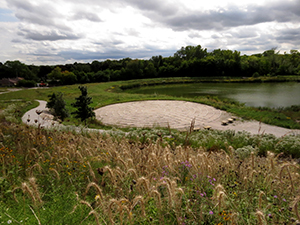 In 2009, the Forest Exploration Center was founded as a This 501 (c) (3) non-profit organization dedicated to sustainable forestry, education, and accessible recreation becomes the official steward for the forest and formal partner of the Wisconsin DNR Division of Forestry. Led by John Gee, its first executive director and board president who had extensive experience in charter schools on a national level, the FEC was formed to be a charter school associated with a local district like Wauwatosa or the University of Wisconsin-Milwaukee. Neither of those scenarios occurred for a variety of reasons, so the focus shifted to conservancy and the current initiatives.
In 2009, the Forest Exploration Center was founded as a This 501 (c) (3) non-profit organization dedicated to sustainable forestry, education, and accessible recreation becomes the official steward for the forest and formal partner of the Wisconsin DNR Division of Forestry. Led by John Gee, its first executive director and board president who had extensive experience in charter schools on a national level, the FEC was formed to be a charter school associated with a local district like Wauwatosa or the University of Wisconsin-Milwaukee. Neither of those scenarios occurred for a variety of reasons, so the focus shifted to conservancy and the current initiatives.
The FEC also worked with Metropolitan Milwaukee Sanitary District (MSD) and the Department of Transportation (DOT), allowing those entities to conduct construction on a part of FEC land in exchange for building a road and parking for easy access off Swan Blvd.
Making the experience unique
Gaertner said the real objective is to provide a unique experience for those who take the FEC pathways, planned to be an immersive yet relatively compact visit.
“You take out what you bring in,” Gaertner said. The thrust is to keep the FEC pristine from recreational activities even though Gaertner says the group could possibly pull off a picnic shelter and a restroom as long as they did not encroach on the natural pathways.
Board views
Two FEC board members expressed their views of the site.
It’s a great little gem,” said Alan Kesner, who also serves as Wauwatosa’s city attorney. “I enjoy going there and the concept of providing such a resource for those in an urban area who don’t always have a way to experience it is a real attraction.”
Jean Davidson, executive of Yell and Tell, a non-profit promoting safety for children, said her work on the FEC is a natural extension of her love of nature and her involvement in River Edge Nature Center in Newburg and other activities. She said she often walks over to the FEC for respite.
“I come from the viewpoint that the woods should remain as natural as possible and to let people explore beyond the paths. Let children play in the trees, put up a hammock and do whatever. Anytime you get a group of people together, you will have different ideas.”
Gaertner said those views all come together for a common good.
“We are all allies in preserving the natural elements,” he said. “It’s our mission.”
For more information, go to www.forestexplorationcenter.org.
Branching Out
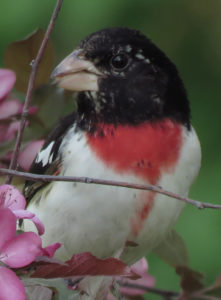 There is much more of nature to explore beyond the gem that is the Forest Exploration Center. No one knows that better than Kimberly Mackowski, a local birder who has enjoyed the FEC among many other natural settings. Her love of birds led her to visit a potpourri of our region’s natural settings. That led to her creating The Park Next Door. The site features the wonders of local getaways ranging from a neighborhood park to county grounds and state forests.
There is much more of nature to explore beyond the gem that is the Forest Exploration Center. No one knows that better than Kimberly Mackowski, a local birder who has enjoyed the FEC among many other natural settings. Her love of birds led her to visit a potpourri of our region’s natural settings. That led to her creating The Park Next Door. The site features the wonders of local getaways ranging from a neighborhood park to county grounds and state forests.
Mackowski’s bird collection started with a parakeet during her teen years and has grown to a flock of varying number and species. An avid nature lover, she now has a backyard at her West Allis home that is designed to attract winged nature. She also brings a camera on her nature trips, a way to record her sightings.
“I was always interested in taking pictures and step by step I got a better camera to get more birds,” she said. “I researched where I could find certain birds.”
Mackowski’s research found that the DNR site was helpful to a certain extent with an overview of parks. And did not offer photos.
“I amassed all these photos and at first I put them o Facebook,” she said. “So, I thought there should be a better place for all of this. That’s when I started The Park Next Door.”
That was in 2014. Now the site feature well over 170 locations, from nearby to further regions of the state. Mackowski said she has had a number of people respond and thank her for the site, including blog.
“People like to know some of these hidden spots like state parks, some county parks a but also the little hidden spots that are very close. The Forest Exploration Center is a prime example of what I try to present.
“I have seen a lot of movement toward preserving space which is wonderful. I feel like the movement is out there.”
For more information, go to www.theparknetdoor.com



